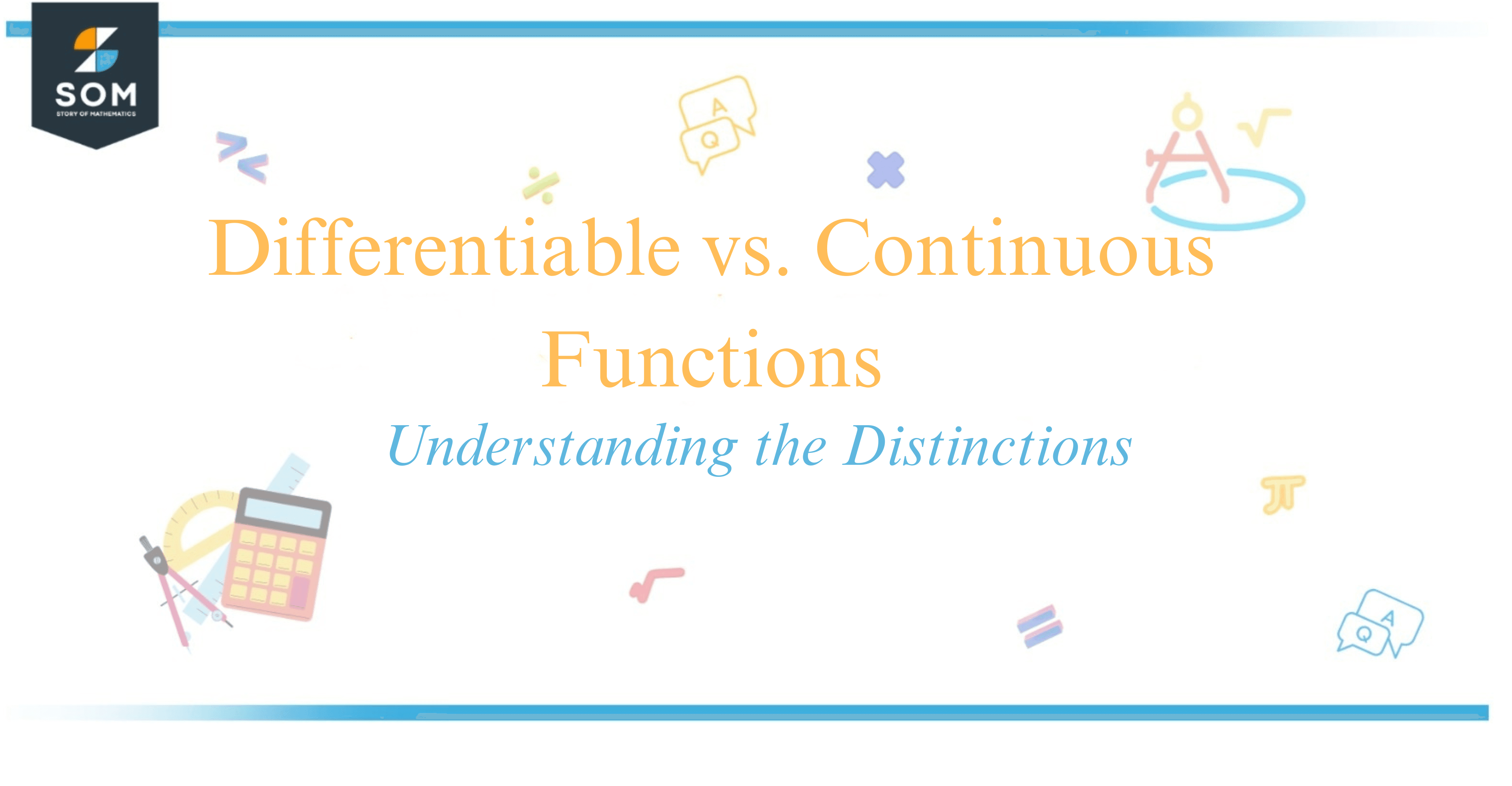
Differentiable vs. continuous functions are foundational concepts in calculus that explore the behaviors of functions across real numbers.
A function is said to be continuous at a point if small changes in the input near that point result in small changes in the output; formally, ( f ) is continuous at ( x = a ) if $\lim_{x \to a} f(x) = f(a)$.
For a function to be differentiable at a point, it must not only be continuous there but also have a defined derivative, signifying a clear tangent at that point.
Understanding these concepts helps me, and fellow mathematicians and scientists, predict and describe the intricate workings of various physical phenomena. Let’s explore how these pieces fit together and why they’re more important than you might initially think.
Main Differences Between Differentiable and Continuous Functions
The main differences between differentiable and continuous functions hinge on their behavior and requirements at a given point or over an interval. Differentiable functions must have a defined slope or tangent at every point, while continuous functions need not exhibit such smoothness.
Continuity: A function is continuous at a point if the left-hand limit, right-hand limit, and the value of the function at that point all agree, denoted as $\lim_{x \to c^-} f(x) = \lim_{x \to c^+} f(x) = f(c)$. Continuous functions have no discontinuities such as jumps, holes, or oscillatory behavior, and the graph can be drawn without lifting the pen.
Differentiability: A function is differentiable at a point if there is a well-defined tangent line at that point, implying a unique slope. This means the limit of the slope of the secant lines, as the two points converge on the point of interest, exists and is finite. The derivative, $f'(c)$, represents this slope and is given by $\lim_{h \to 0} \frac{f(c+h) – f(c)}{h}$, if this limit exists.
Interrelation: All differentiable functions are continuous, but not all continuous functions are differentiable. For instance, $|, x, |$ is continuous everywhere but not differentiable at $x = 0$ due to a corner.
Unlike continuity, differentiability is a stricter condition requiring both a lack of discontinuities and the existence of a finite, well-defined, instantaneous rate of change at every point in its domain.
Piecewise-defined functions, graphs with corners or cusps, and functions with a vertical tangent (like $y = x^{1/3}$ at $x = 0$) illustrate functions that challenge differentiability while maintaining continuity.
The Mean Value Theorem, linking differentiability and continuity, states that for a continuously differentiable function, there is a point where the tangent is parallel to the secant line between two endpoints of any interval.
Conclusion
In my exploration of the relationship between differentiability and continuity, I’ve observed a fundamental connection: while every differentiable function is continuous, not every continuous function is differentiable.
Consider the comparison of these two mathematical properties in the context of their place in calculus.
A function $f$ is continuous at a point $x=a$ if $\lim_{x \to a} f(x) = f(a)$. This means the function’s limit at $a$ equals the function’s value at $a$.
Meanwhile, differentiability goes a step further — a function $f$ is differentiable at $x=a$ if the derivative $f'(a)$ exists, implying that the function has a defined slope at that point.
An example to reinforce this knowledge is the absolute value function $f(x) = |x|$, which is continuous everywhere but differentiable everywhere except at $x = 0$. Here, the sharp “corner” at the origin creates a point where the slope isn’t defined, highlighting the distinction between continuity and differentiability.
I encourage you to think of continuity as a necessary condition for differentiability—a smooth, uninterrupted path.
Yet, differentiability is a higher-order condition, requiring the path to not only be smooth but also to have a tangent line at every point within the function’s domain.
Remembering these crucial differences will serve you well in the study of calculus and your mathematical endeavors.
